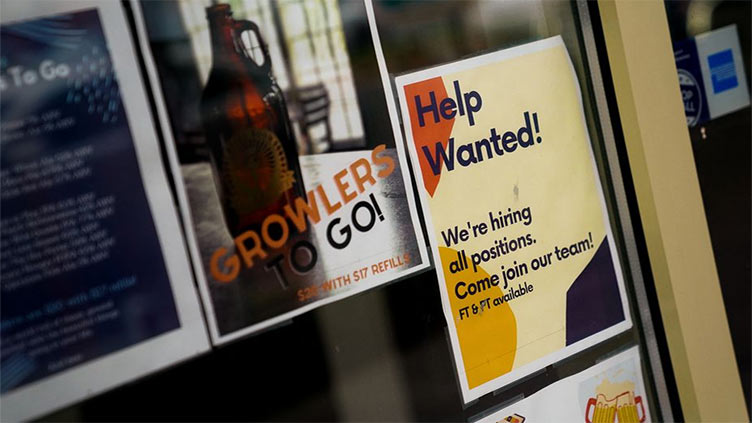US job growth sizzles; wage inflation cooling

Business
US job growth sizzles; wage inflation cooling
WASHINGTON (Reuters) - US employment increased by the most in eight months in September as hiring rose broadly, pointing to persistent labor market strength that could give the Federal Reserve ammunition to raise interest rates again, though wage growth is slowing.
The larger-than-expected increase in nonfarm payrolls last month and a sharp upward revision to July and August's jobs counts reported by the Labor Department in its closely watched employment report on Friday cemented expectations that economic activity accelerated in the third quarter.
The labor market and the broader economy's resilience, 18 months after the US central bank started raising rates to cool demand, suggests that monetary policy could remain tight for some time. The report followed news this week that job openings jumped in August and first-time applications for unemployment benefits remained low in September.
Financial markets and most economists believe the Fed is probably done hiking rates because of a recent surge in long-term US Treasury yields.
"The jump in employment, the extremely low level of unemployment claims, and the rise in job openings keep alive the possibility of the Fed raising rates one more time this year," said Kathy Bostjancic, chief economist at Nationwide. "Moreover, it underscores that they will be in no hurry to cut rates - higher rates for longer."
Nonfarm payrolls increased by 336,000 jobs last month, the largest increase since January. The economy created 119,000 more jobs than previously reported in July and August. Economists polled by Reuters had forecast payrolls rising by 170,000 jobs. The economy needs to create roughly 100,000 per month to keep up with growth in the working-age population.
The broad increase in payrolls was led by the leisure and hospitality industry, which added 96,000 jobs. Restaurants and bars dominated, with 61,000 positions created, returning employment in the sector back to its pre-pandemic level.
Government employment increased by 73,000 jobs, boosted by state government education and local government, excluding education. Government employment remains below its pre-pandemic level by 9,000 jobs. The healthcare sector added 41,000 jobs, lifted by ambulatory healthcare services, hospitals, nursing and residential care facilities.
There were gains in professional, scientific and technical services employment, though temporary help hiring continued to decline. Employment in the transportation and warehousing industry also rose as did retail and construction payrolls.
There was no impact on payrolls from a strike by the United Auto Workers (UAW) at General Motors (GM.N), Ford Motor (F.N) and Chrysler parent Stellantis (STLAM.MI). The strike by roughly 25,700 of the 146,000 UAW members started towards the end of week that the government surveyed businesses for September's employment report. Manufacturing payrolls increased 17,000.
Employment in the motion picture and sound recording industries fell 7,000 because of a months-long Hollywood strike.
US stocks opened lower. The dollar gained versus a basket of currencies. U.S. Treasury prices fell.

